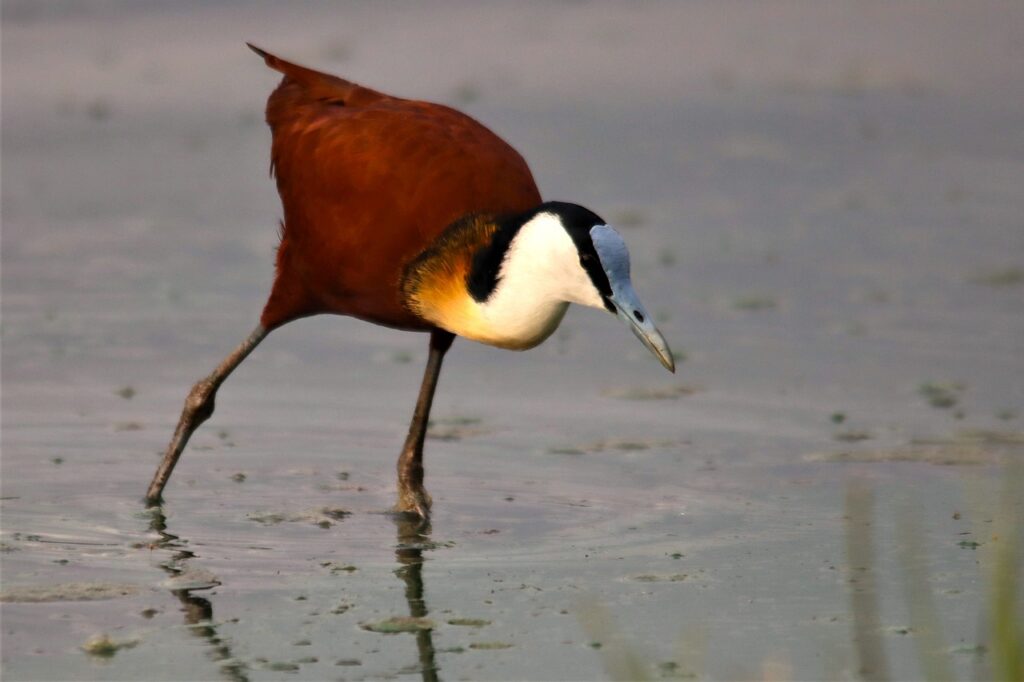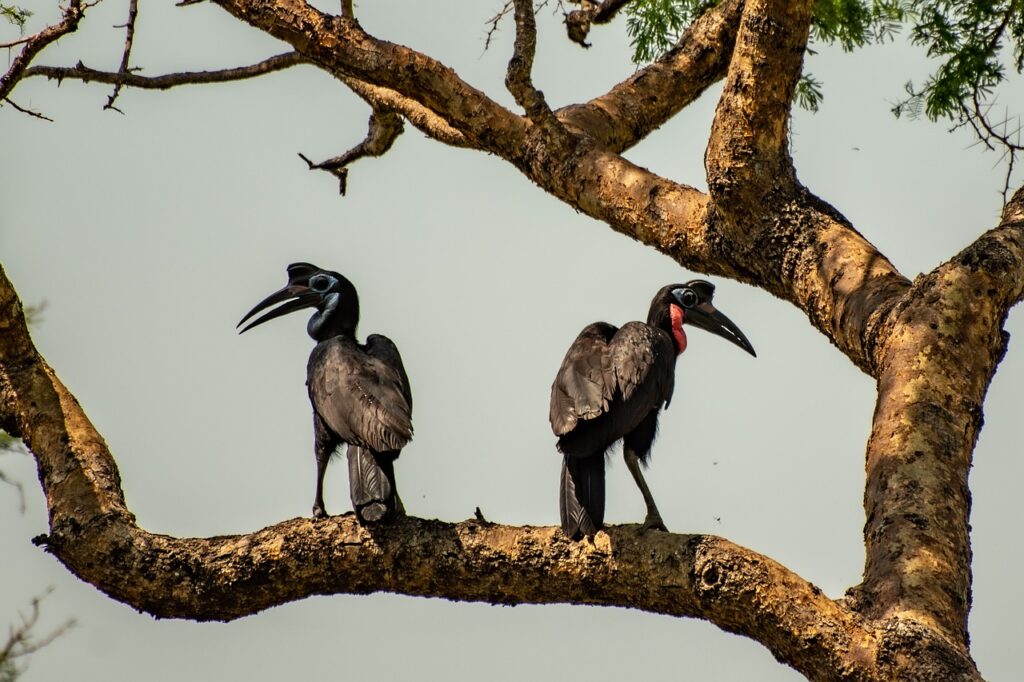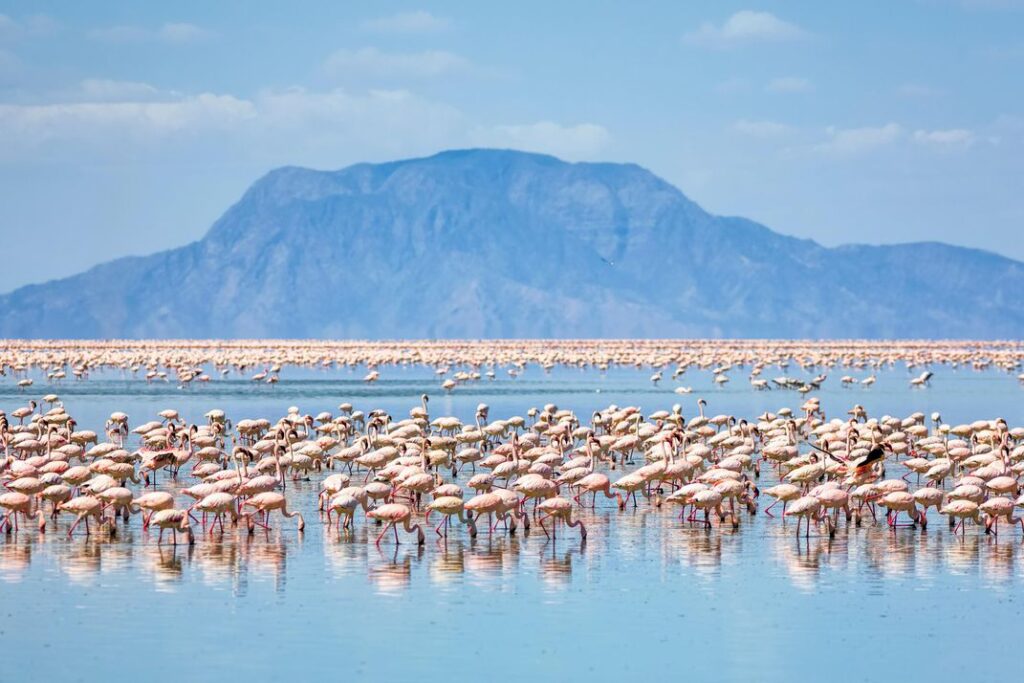8 Days Amazing Luxury Bird Watching Safari in Northern Tanzania
8 Days Amazing Luxury Bird Watching Safari in Northern Tanzania
On this 8 days birding watching Safari in northern Tanzania you will enjoy the Northern Really amazing experience. Northern Tanzania contains perhaps the most magnificent wildlife spectacle on Earth! The famous Serengeti and Ngorongoro Crater still support over two million large mammals; vast herds of herbivores and accompanying carnivores live in this immense wilderness and we shall experience this wondrous sight whilst traveling through this superlative region, where some of the best birding in Africa occurs. We begin on the wooded hillsides between Mount Meru and the mighty Kilimanjaro and visit a diverse cross-section of this wonderful country. The list of splendid wildlife seems endless – lions, leopards, cheetahs, hyenas, zebras, wildebeest, antelopes – and birding will be awesome, from Ostriches to Martial Eagles and Secretary Birds, from sunbirds to sand grouse, bustards and hornbills. We descend into the Ngorongoro Crater. There is so much to see here – fabulous birds, lots of large mammals including the alarmingly rare Black Rhinoceros, breathtaking scenery. We also take in Tarangire National Park, home to classic baobab trees and large numbers of African Elephants. The indelible memories on our Tanzania birding and wildlife safari of marvelous wildlife, dramatic scenery and still present wilderness are to be cherished for a lifetime!
Detailed Itinerary
Welcome to Tanzania: Meet and greet at arrival point(usually at Kilimanjaro International Airport ,JRO) by our transfer and representative driver from Nduwa Tours who will escort you to the waiting vehicle for loading your luggage then drive you to the Hotel in Arusha town. You will meet our representative who will show up at the Airport with a sign board with your name and a warm smile on his/her face when welcoming you to Tanzania. After checking in at the hotel you will get a briefing about your next day’s 8 days birding watching Safari in northern Tanzania then your safari guide will come to give you a brief about this safari and share with you a copy of this safari itinerary. The rest of the day can be spent relaxing at the pool or exploring the town of Arusha.
Accommodation: River Trees Country Inn on Bed & Breakfast Basis
We will commence our Wildlife Safari proper with a morning transfer that should take less than an hour, from your accommodation, nestled in the lush foothills of Mount Meru, a dormant stratovolcano, which at 4565 metres is the fifth highest mountain in Africa.The beautiful and historic lodge (established in 1901) is set in extensive gardens beside a clear and fast-flowing mountain river, lined by old-growth evergreen forest. Already there are birds and mammals a plenty. High in the riparian canopy Silvery-cheeked Hornbills cackle and chatter to one another whilst splendidly cloaked Pied Colobus monkeys holler gruffly from troupe to tree-top troupe, piercing the crisp morning stillness. There are a few Hartlaub’s Turacos and other skulking birds in this forest, and many, many more in nearby Arusha National Park which is our port of call for the first full day.Arusha National Park surrounds and includes Mount Meru, so it is a very varied park, albeit a small one by Tanzania standards. Much of it is forested and we will pay close attention to this forest as much of the safari will take us through more open savanna habitats. There are two special mammals, both antelopes, too look for here. One is tiny and one very small, both inhabit these moist and often dense forests. The Suni is the smallest and they are together with the monkeys (of which there are three species here: Colobus, Mitis and Vervet) a favourite food of the stupendous African Crowned Eagle. If we are lucky we will get good views of this huge raptor, more than likely in its noisy rollercoaster display flight, high above the montane forest canopy.
We will explore a variety of the biotopes protected within this montane park so that our first full day should introduce us to the exceptional biodiversity to be found in Equatorial East Africa. There are numerous small lakes and scattered ponds within the park. Some of these are distinctly brackish with birds to match. Waterbird species range from those that are cryptic and shy, such as the White-backed Duck and African Water Rail, to the brilliantly coloured and seemingly ostentatious Greater and Lesser Flamingos, noisy Black-winged Stilt, graceful Pied Avocets and the utterly splendid Grey Crowned Crane.
We will see our first African big game today. Plains Zebra, Common Waterbuck, Bushbuck, African Buffalo, Common Warthog and of course the uniquely fantastic Giraffe, a species for which Arusha National Park is renowned. Perched amongst, around, or even on top of the beasts we will notice their avian commensals. Birds who in myriad ways depend for their livelihood upon the everyday activities of the great browsers and grazers – the East African mega fauna with which Tanzania is so rightly famous. There are oxpeckers, vibrantly coloured starlings, brilliant ‘sunshine-filled’ weavers, dun coloured pipits and yellow wagtails, in the long grass are tiny Estrildid waxbills as well as many bigger birds: storks, herons, egrets, ibises, lapwings and so forth. Each day we endeavour to get out of the customized, long wheelbase Toyota land cruiser vehicles (with pop-up roofs) as often as possible. In the national parks of Tanzania walking is strictly controlled so we shall make full use of the vicinity of the entrance gates, the picnic sites, restroom areas, museums and interpretive centres, the hotel grounds, camps, lodges and some of the remote ranger posts in order to undertake a variety of mini bird walks. It is remarkable and, perhaps to many, a little surprising that such locations provide some of the most interesting observations. Humans have always been a part of nature in tropical East Africa and even today, in the vast protected areas, one tends to find a greater variety of bird species around those places where human activity is disturbing the landscape. Disturbing the habitat structurally, yet not in any serious way threatening the wildlife. As an example the forest clearing around a tiny museum in the middle of Arusha National Park can offer opportunities to find some rare birds that are not easily found elsewhere. And we will certainly stop there.
Accommodation: River Trees Country Inn
Meals: Breakfast, Lunch & Dinner
Today we can go for an optional pre-breakfast bird walk around the beautifully mature grounds of River Trees Country Inn. Hadeda Ibises and Tropical Boubous will have loudly welcomed the dawn, calling out in a series of wails or with rich bell-like duets respectively. After breakfast we will depart for the drier baobab-studied savannas of Tarangire National Park.Our safari lodge at Tarangire has one of the most amazing views in the world. It is quite rightly advertised as awesome. The lodge is perched on a bluff overlooking the sandy river bed, from which the park gets its name. It is not unheard-of for visitors to log one hundred bird species at this lodge, and that is before breakfast!
Accommodation: Maramboi Tented Lodge
Meals: Breakfast, Lunch & Dinner
Departing with a picnic box, we travel across the Great Rift Valley, passing through the very colourful market town of Mto wa Mbu (the “mosquito river”), for a full day in Manyara National Park. Manyara is named after the brackish lake which forms its eastern boundary. A small park, the oldest and arguably the most diverse in Tanzania. Birds abound especially along the north western shore line where fresh water streams enter the lake. We will have ample opportunity to investigate this wealth of water birds from the tracks and the viewing platform at hippo pools. It is not difficult to find over 150 bird species during a single day in this National Park.
Manyara is also famous for its tree-climbing lions, for big elephants and for its hundred strong communities of Olive Baboons. However there are many smaller creatures here to delight the eye. Such as the dancing jewel damselfly, the Black Kaiser dragonfly and many very colourful birds: seedeaters of many kinds: such as queleas, bishops, whydahs and widow birds. There are strange looking African insectivores too, such as scimitarbills, helmet-shrikes and wattle-eyes. There are African Paradise Flycatchers and a healthy variety of rather drab, more typical old world flycatchers. In the tall trees of the groundwater forest, at the foot of the Rift Valley escarpment, usually there are groups of frugivorous birds: green pigeons, turacos and hornbills and a host of more cryptic bird species in the bulbul family. After an undoubtedly eventful and undeniably somewhat tiring day, observing the richness of wildlife in the heat of the Rift Valley, it will be something of a relief to scale the western wall in the cool evening air and arrive at our very comfortable lodge in the highlands above Mto Wa Mbu. We stop in the bustling little town of Mto Wa Mbu above which we will spend the next one nights at Mawe Mawe Lodge, in a spacious and elegant lodge, set amongst tall trees and in its own coffee farm, orchard and vegetable garden.
Accommodation: Mawe Mawe Lodge
Meals: Breakfast, Lunch & Dinner
Today is often the highpoint in any visitor’s experience of a safari in northern Tanzania. Our day in Ngorongoro Crater will provide a succession of experiences of great game and of wildlife at very close quarters in a truly spectacular setting, and provide encounters with birds of varied shape, colour and size; even when set against the wonders that we will have witnessed earlier. There are predators: lions, spotted hyenas, African wolves (formerly known as Golden Jackal) each either surveying, or equally dozing among, the great herds of wildebeest, zebra and gazelle. There are several hundred old male “Tusker” elephants who graze in the swamps for whom the crater floor is their retirement home. Words definitely cannot begin to convey the wonder of Ngorongoro. It is a place so remarkable, so utterly unique, that being here can be both a breathtaking and humbling experience. There is a seasonal salt lake – Magadi which, by early April, should support thousands of displaying flamingos surrounded by flocks of migrant shorebirds on their way north. There are swamps and small freshwater lakes hosting hippos, Saddle-billed Storks, African Spoonbills, Jacanas, crakes and rails. There are Grey Crowned Cranes, giant Kori Bustards and of course even bigger Ostriches out in the grassland and there are African passerines in the woods. Many, often tiny, birds with confusing and somehow unrevealing names: Apalis or Eremomela, Crombec, Camaroptera or Batis. One must be out of the Crater by six pm and then we shall drive the short distance along the crater rim to our lodge which is perched right on the rim of the giant caldera. The tall trees below the lodge are festooned with mosses , beard lichens, orchids and various saprophytic plants. When these are flowering they attract scintillating sunbirds among which the Golden-winged, the Malachite and Taccaze are perhaps the most spectacular.
Accommodation: Ngorongoro Serena Safari Lodge
Meals: Breakfast, Lunch & Dinner
Leaving Ndutu after breakfast we will continue our journey westwards traversing the short grass plains. We will pass through Naabi Hill where we leave the Ngorongoro Conservation Area and enter the Serengeti National Park. At Naabi we will be able to walk up onto the top of this kopje or inselberg (an ancient weathered outcrop of crystalline rock) since it affords us a unique panorama of this wonder land of the world. We will be keeping an eye open specifically for the migrating birds, there should be both Pallid and Montagu’s Harriers and flocks of Lesser Kestrels heading north, possibly accompanied by Amur Falcons in the early stages of their amazing return journey to the Far East of Siberia. Our lodgings for the next two nights will be at a small permanent camp in the heart of the central Serengeti. From here we will be well placed to journey short distances in search of all three of the big cat species that still occur here at natural levels of abundance: Lion, Leopard and Cheetah. There will be a diversity of antelope that we should also look for. There are strange-faced, sandy-coloured Coke’s Hartebeest and their close relatives the chestnut Topi. In areas of well wooded grassland the supremely graceful Impala occur in herds of anything up to two hundred individuals. We will also look for Klipspringer up on the granite kopjes and out on the plains watch herds of the great Eland, largest of all the antelopes, so large in fact that the Masai classify this animal as an honorary cow. Given the abundance of food Spotted Hyenas are numerous in the central Serengeti. And among the smaller predators that we may find here are African wildcat, Aardwolf, Ratel and small family packs of Black-backed Jackal.
Accommodation: Kubukubu Tented Lodge
Meals: Breakfast, Lunch & Dinner
After a final morning of birding we will catch a mid-day flight from Seronera Airport to Arusha Airport, in order that our Tanzanian birding and wildlife safari should conclude where it began. Departure flights can be scheduled any time today. Breakfast is available at the hotel and you can bird the grounds of the lodge or relax by the pool before you take the short transfer to the airport for your international flight.
The day is left free to wind down after the trek before your flight home. Depending on flight times you could go and explore Arusha town and grab some souvenirs before heading to the airport.
NB: In additional Nduwa Tours also will love to prepare for you a Mountain Climbing Program at Mount Kilimanjaro or Mount Meru or if you prefer Zanzibar beaches we can also make it unforgettable for you as a private tour, honeymooners or photograph safari.
Price includes:
- Transportation in a 4×4 safari vehicle with open Roof Vehicle
- Professional, English-speaking,Knowleageable birding guide
- Meals according to the itinerary (B,L,D)
- Mineral water (Drinking Bottle Water)
- Wi-Fi in the Safari Vehicle
- AMREF (Flying Doctors Insurance)
- Ngorongoro Crater Fees
- Olduvai Gorge
- All mentioned activities
- All national park fees
- WMA fees & Conservations Fees
- Government Tax (VAT)
- Driver’s Salary and park fees for vehicle and driver
- Snacks in your safari car
- Airport Transfers X2 (On arrival and on Departure)
- Soft Drinks during the safari
- Bottle of Wines
- Local Beers
- Flight from Serengetito Arusha (ARK)
- Walking activity at the rim of the Crater
Price do not include:
- International Flights
- Accommodation after safari
- Optional activities ,Balloon Safari 595 $ per person
- Visa fees
- Tips
- Personal spending money for souvenirs etc.
- Travel insurance
Thanks for choosing Nduwa Tours as your Safari host in Tanzania Birding Safari.


